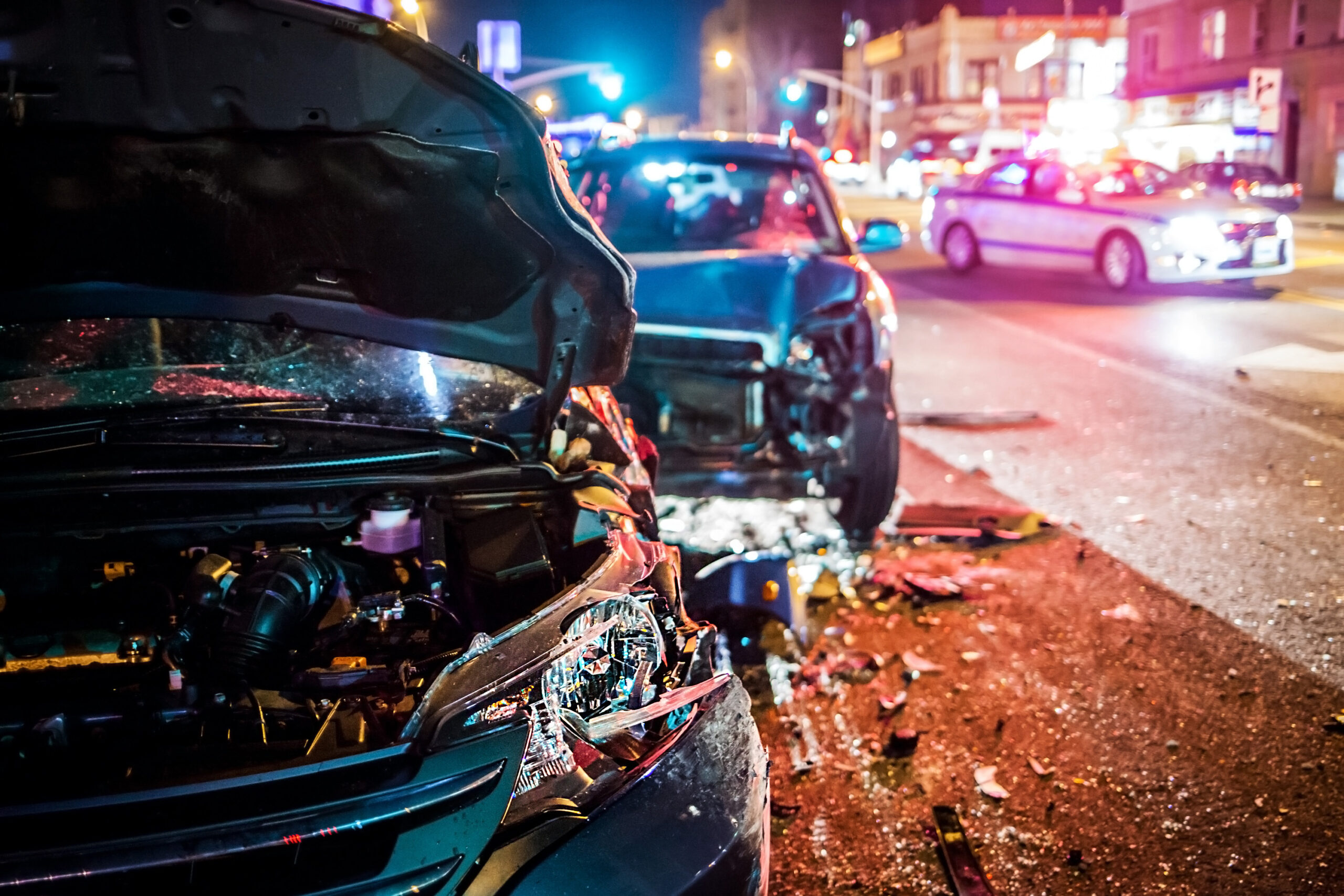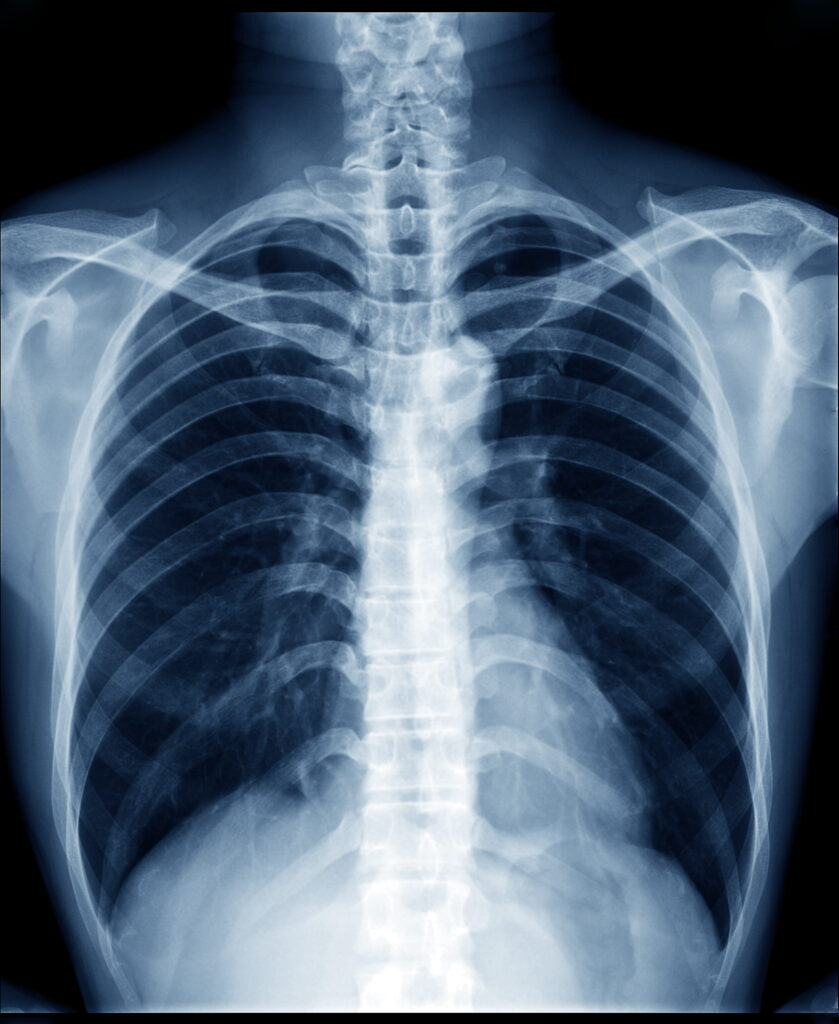
Spinal Injuries from Car Accidents
A spinal injury is caused by damage to the neck, mid-back, or lower back structures, known medically as the cervical, thoracic, and lumbar spine. These structures protect the spinal cord, which controls communication between the brain and body. Severe damage may result in chronic pain or paralysis.
After a motor vehicle collision, accident victims must pay close attention to pain symptoms. A minor initial injury may advance to a debilitating pain condition without emergency care. It is essential to receive immediate medical care if you believe you suffered a spinal injury from a car accident. Without treatment, spinal injuries can worsen over time.
How Car Accidents May Cause Spinal Injuries
The average weight of a vehicle is approximately 1.4 tons or 2,800 pounds. During a car accident, the human body absorbs the shock and energy of all this weight, which is considerably more than the average person can bear. The sheer force of impact alone or the trauma from being thrown against other structures in the vehicle can cause spine injuries.
Motor vehicle accidents are the leading cause of spinal injuries, accounting for 39.3% of all cases, according to data from the National Spinal Cord Injury Statistical Center (NSCISC). Aside from traumatic car accidents, serious falls are the only situations that come remotely close to causing spine injuries at such a high rate.
A spinal injury from a car accident may never be completely avoidable simply due to the excessive force involved in vehicle collisions. Drivers and passengers can limit the potential for severe spine injury in the following ways:
- Wearing a seat belt at all times
- Avoiding texting while driving
- Abiding by the posted speed limit.
What Happens When the Spinal Cord is Damaged?
In the best-case scenario, an individual with a minor spine injury who receives swift medical care and abides by treatment guidelines may fully heal with no further complications. It is also common for accident victims to suffer soreness, stiffness, limited range of motion, and nerve pain for months or possibly years after a spinal injury.
In the worst-case scenario, a car accident may damage the spinal cord housed inside the spinal column. When this occurs, the nerve fibers that make up the spinal cord become severed or impaired, interrupting essential central nervous system function. Spinal cord damage can interfere with communication from the brain to the rest of the body, causing life-changing outcomes.
Spinal cord damage may lead to:
- Permanent nerve damage
- Paraplegia, or partial paralysis in the lower body
- Quadriplegia/Tetraplegia, or paralysis in both arms and both legs

Common Types of Spinal Injuries
The spine, known medically as the spinal column, extends from the base of the skull into the hips. It’s composed of 33 small bones called vertebrae. In between each vertebra is a shock-absorbing cushion called an intervertebral disc. These structures form a column around the spinal cord, which sends nerve signals from the brain to the rest of the body.
A spinal injury from a motor vehicle collision can damage any part of the spinal column or the spinal cord it protects. Below are the most common types of spinal injuries resulting from a crash.
Whiplash
Whiplash is a type of neck injury that occurs when the structures of the cervical spine are over-extended. Whiplash injuries are common after a car accident because the impact force causes the head, neck, and upper back to move forward and backward rapidly.
Though whiplash is classified as a soft tissue injury, it occurs in the cervical spine. Whiplash affects muscles, tendons, and ligaments rather than bones. It’s technically a cervical sprain, which means neck ligaments have been stretched or torn.
Herniated Discs
A herniated disc occurs when an intervertebral disc’s soft, gel-like interior leaks out of a crack in its exterior. This material can press on surrounding spinal nerves within the spinal column, creating numbness, tingling, or shooting pain.
In addition to disc herniation, the trauma of a car accident can also cause a bulging disc. A disc bulge occurs when a spinal disc pushes out of its respective place in the spinal column.
Spinal Fractures
A spinal fracture is a partial or complete break in one of 33 spinal vertebrae. The blunt force of a traumatic accident can shatter the bone or cause small cracks known as hairline fractures. Bone fragments from spinal fractures can pinch or damage spinal nerves or the spinal cord.
In a five-year study of accident victims with spinal fractures, more than 50% of breaks occurred in the cervical spine.
Spinal Stenosis
Spinal stenosis is the medical term for a narrowing of the spinal canal. A spine injury can damage the vertebrae and discs that protect the spinal canal, causing inflammation that reduces the space for the spinal cord. Limited space can put pressure on the spinal cord, causing pain, weakness, and numbness.
Spondylolisthesis
Spondylolisthesis is a common injury in the lumbar spine or lower back. This injury occurs when a vertebra slips out of place and pushes on the bone below. If the vertebra shifts dramatically, it can press on spinal nerves and cause leg pain, numbness, and chronic low back pain.
Spinal Cord Injuries
Spinal cord injuries (SCI) refer to damage directly to the spinal cord. The spinal cord is one-half of the central nervous system, so damage to its nerve fibers may interfere with or prevent communication between the brain and the rest of the body. SCIs are categorized as either incomplete or complete.
- An incomplete SCI occurs when a victim still has some sensation or mobility below the affected area.
- A complete SCI occurs when a victim loses all feeling and mobility below the affected area.
A complete SCI may cause paraplegia, the paralysis of both legs, or tetraplegia, the paralysis of both arms and legs. Severe SCIs may also lead to a brain injury after a car accident because damage to the spinal cord can degrade brain function over time.

Symptoms of a Spinal Injury
A spinal injury can occur anywhere in the back, from the neck down to the lumbar spine. In some cases, spinal injury symptoms may not appear until several hours or even days after the crash. Never assume mild pain symptoms will resolve on their own. A medical professional should examine any localized or radiating back pain after a car accident.
Common symptoms of a spinal injury include:
- Neck pain
- Feeling dizzy and/or tired
- Headache at the base of the skull
- Stiffness in the neck and shoulders
- Muscle spasms
- Loss of or limited neck movement
- Numbness or tingling in the arms
- Radiating pain down the buttocks and legs
- Tingling or numbness in arms, hands, legs, or feet
Emergency Signs and Symptoms
If your spine is severely injured, you will feel immediate symptoms. Emergency signs of a spinal injury should never be ignored. After a car accident, keep a close watch for the following symptoms of a spinal injury.
- Difficulty standing or walking
- Intense pressure in the head, neck, or back
- Weakness or paralysis in any part of the body
- Loss of sensation, numbness, or tingling, in the feet, toes, hands, or fingers
- Loss of bladder or bowel control
If you or a loved one experience any of the above spinal injury symptoms, visit an emergency room immediately. If you have a traumatic spinal injury, you will need to visit a medical facility capable of performing emergency diagnostic tests or emergency surgery.
When Should You See a Doctor for Your Symptoms?
You should always visit a doctor for pain symptoms after a car accident, even if the pain appears hours later or the next day. Certain symptoms associated with back pain should prompt you to see a doctor immediately.
Seek medical care immediately if you experience any of the following symptoms:
- Loss of control or coordination in any body part, including fingers and toes
- Inability to stand
- Inability to control your bladder or bowels
When left untreated, these injuries can cause permanent, life-changing damage to your entire body.
If your symptoms are less severe but still restrict your range of motion or cause pain, still visit a doctor for an accurate diagnosis. Injuries, such as a disc injury or a muscle injury, may mimic the same pain symptoms. The only way to properly determine where back pain is coming from is to receive a diagnosis from a medical professional.
How are Spinal Injuries from Car Accidents Treated?
Spinal injuries from car accidents must be properly diagnosed before treatment can begin. First, a doctor will perform a physical examination to check for range of motion, muscle strength, tenderness, and swelling. Then, they will order diagnostic imaging like an X-ray, CT scan, or MRI to get a clear picture of any fractures, disc injuries, swelling, or bleeding.
Depending on the injury severity, a spinal injury will have multiple treatment options, including:
- Rest: Minor injuries may require you to rest the affected area for 48 to 72 hours.
- Surgery: Severe damage like a fracture may require surgery to heal fully.
- Injections: Inflammatory injuries, like spinal stenosis, may require corticosteroid injections to bring down swelling.
- Medications: Pain medication and anti-inflammatory medication may be required to limit symptoms while the injury heals.
- Physical therapy: Exercise, massage therapy, and physical therapy may be required to help the injured area return to full mobility.
How an Auto Accident Attorney Can Help
A spinal injury from a car accident can incur steep medical expenses, especially if the spinal cord injury is severe. The first year of medical bills after a complete SCI can cost more than $1 million, with each following year costing more than $180,000. An auto accident attorney can fight for the victim of a spine injury to ensure they receive a fair settlement for their damages.
A car accident attorney will help collect the necessary evidence to prove the at-fault driver acted negligently and is responsible for the spine injury. An attorney will gather all medical bills, out-of-pocket costs, and property damage fees to compile a tentative settlement amount for the insurance company. If the offered compensation isn’t sufficient, an attorney can file a lawsuit on your behalf.
A study done by the Miley Legal Group showed that the national settlement amount for a neck and back injury from a car accident is $834,686, and the median amount is $285,000. Each settlement is based on the unique factors of the case, and no amount is ever guaranteed.

Contact The Miley Legal Group for Help Today
A spine injury from a car accident can turn a victim’s life upside-down overnight. From debilitating pain symptoms to life-long paralysis, a spinal injury is never anything to take lightly—either medically or in a court of law. If you’ve suffered a spine injury in a car accident that was limited or no fault of your own, contact the attorneys at The Miley Legal Group today.

